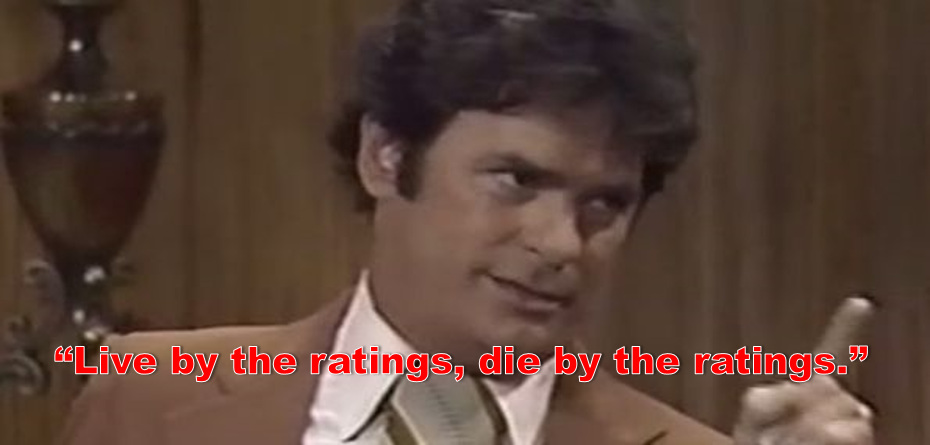 It’s still August, but football – pro and college – is very much in the air. And that means hope springs eternal for every team – even the Detroit Lions.
It’s still August, but football – pro and college – is very much in the air. And that means hope springs eternal for every team – even the Detroit Lions.
But what does it take to win a championship? What are the variables that go into winning the trophy and being hailed as the top team in the country? Most pundits will tell you it takes a strategic management team, great players, a strong coaching staff, practice and preparation, attention to detail, and a little luck.
That’s the read from Minnesota Vikings COO Kevin Warren in a recent New York Times “Corner Office” feature story. Warren earned his Super Bowl ring as part of the St. Louis Rams club (now back in L.A. by the way) back in 1999.
Warren notes the team had everything going for it:
“We had Hall of Fame players. None of our starters missed any time. We had the league MVP in Kurt Warner, and we had five former NFL head coaches on staff. Everything fell into place. And we won the Super Bowl by one yard.”
One yard.
That was the margin of victory, the variable that separated that team from landing on top of the mountain versus ending up being branded as losers. The difference in Warner going out a hero or a goat. The variable that made Coach Vermeil a legend or an also-ran. (For both Warner and Vermeil, 1999 was their only career Super Bowl victory.)
And so it is in radio. Stations can possess all the tools – a great staff, powerful personalities, a brilliant PD, research and marketing budgets, and major events and promotions – and still come up short.
And these days, the margin of victory might turn out to be one household.
And perhaps one meter.

It is becoming popular once again to take out the collective frustration of the industry on Nielsen in general, and PPM specifically. Talk to many broadcasters and they’ll tell you the measurement platform has never lived up to its promise – better stability, increased revenue, higher usage results, and yes, overall value.
And then there are the complaints: one household with up to 16 meter holders or panelists who stay in the system for years. Any of these variables can create sample imbalances that can skew an entire ratings report possibly over long periods of time.
While these circumstance may be a rarity, the one meter situation can clearly make a difference in how ratings turn out. How do we know that? Because Nielsen says so.
The inexplicable reality is that if a station complains long and loudly enough, Nielsen will dig deep into their metered households, and conduct an investigation. And more often than not, it will point to that one meter that has somehow gone astray, shifted allegiances, aged out of the demo, or some other circumstance that is supposed to mollify the client.
But while providing a short-term explanation of “What happened?” the company ends up discrediting its own research by reinforcing the notion that one lousy meter can turn around the fortunes of an entire radio station. These attempts to supply answers turn into corrosive experiences for a company that doesn’t need more bad ink, casting more doubt on the efficacy of the entire system.
So what can radio do?
Clearly dropping Nielsen is an option, and one that some companies, clusters, and stations have tried. The idea is to take those thousands and thousands of dollars saved by not buying ratings, and plow them back into research, marketing, and promotion. Good luck with that, because most companies would quickly move that money right to the bottom line. That’s the world in which we live.
Everyone talks about the need for more sample, more meters, more diaries. But adding 50 or even 100 meters per markets isn’t going to move the needle, much less create more stable ratings. Research pros will tell you the only thing that can make a difference in reliability is to double or triple the sample size. Last time I checked, no one in broadcasting is going to pay for that. The concept of stations opting out of the ratings game ought to raise more questions about how radio is being sold and marketed. As a wise sales manager once said, “Live by the ratings, die by the ratings.”
The concept of stations opting out of the ratings game ought to raise more questions about how radio is being sold and marketed. As a wise sales manager once said, “Live by the ratings, die by the ratings.”
And just like in football, radio fortunes can turn on a dime, leaving even some of the most successful stations on their knees even after years of success.
In football, the rules are the rules. You win games by scoring points (or preventing the other team from doing so).
In radio, it’s always been about Nielsen (or Arbitron or Eastlan or Birch or AccuRatings….).
But why should ratings and share be the sole dividing line between success and failure, especially when one household or one meter can determine a station’s financial fate?
Shouldn’t it be about radio learning how to truly sell and market its stations, telling the story of how it succeeds for clients in period of great ratings or so-so ones?
Shouldn’t it be less about the estimated size of the audience, and more about its quality and spending power?
Shouldn’t it be about opening opportunities for advertisers in successful station podcasts? Or at well-attended station events? Or in participation with station apps, websites, and digital promotions that stimulate real, measurable actions?
I know that in the heat of all the “dump Nielsen” talk, the focus has been on sample size, household rules, and the meters themselves. Going back to diaries or beefing up the meter sample isn’t going to change radio’s fortunes one iota. PPM clients have short memories, conveniently forgetting all the inherent problems with diaries: mom filling out the entire family’s listening, respondents waiting until the last day to record their radio usage, stations going off the air and still showing up in the book, etc. The trip to Beltsville, Laurel, Columbia or wherever to review diaries was almost always a uniquely frustrating experience.
You have to give a nod to Dave Paulus’ Max Media/Norfolk cluster for having the stones to try something different. But even if those truckloads of dollars are actually reinvested back into the product, they’re still left with the dilemma of how they’re going to sell and market their stations.
Talk to programmers who create great events, bigger-than-life promotions, compelling special programs, appealing podcasts, and viral videos about what happens when they make these gems available to the sales department for sponsorship. From all this activity, the audience benefits, the brand gets stronger, but too often, the bottom line doesn’t grow because so few sellers truly know how to monetize these assets if they aren’t attached to CPMs or ratings and shares.
The truth is that radio doesn’t have a ratings problem. It has a sales problem.
And until it looks that monster in the eye, nothing is going to change.
- Why “Dance With Those Who Brung You” Should Be Radio’s Operating Philosophy In 2025 - April 29, 2025
- The Exponential Value of Nurturing Radio Superfans - April 28, 2025
- What To Do If Your Radio Station Goes Through A Midlife Crisis - April 25, 2025




Spot on Fred -thank you for the perspective. As a radio seller and media buyer – I see ratings as a piece of the sales deck. However if rankers are the first 5 slides then yes, you’ll live and die by them. In the digital content world messaging falls into two general buckets – push or pull. A simple example – an email subject line: Push: “from the staff at Q100” or Pull: “Taste the best BBQ ribs in town Saturday at Fuller Park!” Try this: shift the rankers to the last page in the sales deck. Lead your sales presentations with examples (including video/pictures) of the stations thought/lifestyle leadership in the community. You may be quite surprised by how many prospects don’t even ask for the ratings! Balance Nielsen “guestimates” with audience engagement opportunities and related success stories specific to the clients’ needs. Note to sales: Pitching is for campers and baseball players.
Jim, thanks for the comment and perspective, as well as the great idea to reboot sales presentations. Most appreciated.
Fred-
Another great and thought provoking post.
In our situation, it really did just come down to a simple ROI question and as you know, I’m a fortunate GM that gets to work for a company that is willing to take some risks. We will be moving plenty of that money to the bottom line, but more importantly to our team, we’re investing in, diversifying and marketing our products/brands.
We currently have a large digital outdoor campaign, a significant digital pre-roll strategy and are doing research on our stations to help improve both ratings and the overall strength of the company . Frankly, we just couldn’t do that with the financial handcuffs brought on with our Nielsen subscription. Not saying it’s right for everyone, it was just right for us.
We also (as you speak to so well) have made QUALITATIVE the cornerstone of our selling process
That being said, I have no idea whether this is the smartest or dumbest thing I’ve ever done. :):) I know I just got tired of bitching about it and decided to be done with it. Time will tell what it turns into, but I can tell you this. I feel like we control our own destiny like never before.
As I told the staff….you either “define the moment or the moment defines you”
Thanks again for the excellent piece, Fred.
DP
Dave, your decision took courage and discipline – both qualities that you have exuded throughout your career. For other owners and operators, the money saved on not buying the ratings often does not get reinvested into sales training, digital assets, talent, or content creation.
The fact you took control of your situation rather than continuing to whine about the ratings is to your advantage. As I posited to Pierre Bouvard many years ago when he was with Arbitron (the first time), no one complains when they have a good book. Congrats on defining the moment for your stations.
As usual, well said.
If increased sample size was the fastest way to generate sustained revenue growth, the best investment radio could make would be to spend more not less with Nielsen and double the panel, starting in the top 10 markets. Unfortunately, that case for ROI would be difficult at best.
Which takes us back to your conclusion and the reality that unless an advertiser is placing a simultaneous buy with sufficient frequency on every rated station in a market, the “greatest reach platform” position is not allowing us to lead with our greatest strengths.
Andrew, thanks for the comment. Increased meters is a straw man argument that misses the point. You make a strong point, and I appreciate you taking the time to make it.
Once you are off the “heroin” of living and dying by ratings you begin to sell radio as it should be sold- by its effectiveness in moving goods and services for customers.
With transactional national business being an afterthought at this point in time for most stations, ratings services are a quaint notion of a different time.
It’s not 1996 anymore so stop selling radio like it is and do what we do best. Getting results for local businesses!
Ed, great you kicked the habit. You have totally rooted your stations to their respective communities and have reaped the results. Congrats on marketing radio to achieve connections and results. Appreciate the comment.
As usual, your’re right, but radio hasn’t spent the time and money creating the kinds of products you correctly outline to make them important sales factors. Apps, websites, digital promotions and podcasts are great ad vehicles, but for the most part, the ones that come from radio stations aren’t very good. If they were, they offer enough media value to pass the most quantitative buyer’s sniff test. Blaming Nielsen, not being willing to pony up for more sample, doing a half assed job of creating digital products/events and trying to sell them on the cheap won’t fix anything, but that has, with some exceptions, been radio’s approach.
Further muddying the waters is radio spending less and less for its sales effort. Sales is one profession where being money motivated is a plus – maybe even a necessity, so you get what you pay for – pay less…get less, whether you’re selling a 25-54 ranker or digital products.
Buyers of media are demanding more and more accountability, not less. As attractive as “selling the sizzle, not the steak” has always been, the media buying backdrop is becoming less and less receptive to that approach. The answer is disarmingly simple – create better ancillary products, hire people who are up to the job (that means you have to pay them competitively with other sellers of those products) and watch the problem solve itself.
I’ve never seen a radio station make a dime by blaming the rating service, although I’ve seen a lot of them do it. Conversely, when stations invest in their products, make them compelling, market them effectively and develop creative, aggressive effective sales forces, they inevitably do well.
I’ll be interested to see how DP’s courageous redeployment of resources impact hsi cluster’s performance. I think I’m a member of a big group that’s rooting for him.
Bob, great comments that add to an already vital conversation about what truly moves the sales needle. You’ve been in the trenches, so you know the terrain. The ratings are very expensive, and many operations feel tapped out at a time when they need to invest in both content and sales. And as you point out, better ratings (whatever that means) isn’t going to solve this problem. I’m pulling for Dave, too. It’s a viable approach at a time when creativity and innovation on the selling end are in short supply. Thanks, as always.
I think you make a good point Fred, but I also think you miss the point. If radio ratings as they are currently presented are not the key to revenue growth, then why does the industry pay Nielsen hundreds of millions of dollars to publish them, allow Nielsen to sell them to agencies for pennies on the dollars we pay for them, and then the agencies use those rankers to pit us against each other to fight for lower and lower rates.
The industry, with or without Nielsen has to redeploy those dollars toward deeper consumer insights as to the buying behaviors of our listeners on air and online. We need to track the consumer buying journey to prove that radio does drive sales. We have some of the tools to do that. Others are in development.
It’s not as simple as saying, ‘train your sellers.’ You know me, I’ve been doing that for years. It works…but in today’s world, we need to be able to prove ROI to compete with targeted, digital tools,
But for our industry to pay to support a ratings tool that does NOT provide real consumer insights is silly. Real marketers don’t care if you’re station is 5th or 10th on a ranker. They want to see the ROI on their investment in terms of traffic, leads, conversions and sales.
I think Radio is being smart looking at alternative ways to get data on our audiences. When you use the broad brush that radio companies that drop ratings will just push the money to the bottom line, you do a disservice to those companies (and there are a number of them) that are genuinely examining the future, and trying to acquire the tools we need to compete.
You are right. My personal opinion is that more meters provides more irrelevant ranker data. But don’t assume that all of the Radio Industry are spending their effort in a binary discussion of rankers vs. nothing.
Their are other choices out there. We need to move toward better consumer data, and less Nielsen rankers.
Michael, we’re saying many of the same things, but coming at from different points of view (so what else is new?).
Companies like yours are smart to re-evaluate how you’re spending research dollars and sales tools. It goes well beyond how many in a household can get a meter, and to the value of the data you’re receiving and the ability to monetize your content assets and brand strengths. We’re on the same page that the radio industry needs to take a hard look at new ways to measure the audience and what they’re doing.
But in the meantime, I’m involved with too many stations that are earning strong ratings, and still running into serious speed bumps trying to convert them into dollars. Nielsen ratings are the currency, and we’ve got to figure out not just how to game them for higher ratings but how to effectively cash in when the meters actually fall right. Thanks for taking the time. Much appreciated.
Well said! The sales problem you mention relates to the relationship the station has with its listeners. Of course one HH can affect a station but loyalty deepens with strong ties. Find the key factor that resonates with your listeners as well as your clients. After all they may be one and the same.
Victoria, thanks for the comment. On both the sales and programming sides, it is about nurturing loyalty.